Hangul 인사동 Revised Romanization Insadong | Hanja 仁寺洞 McCune–Reischauer Insadong | |
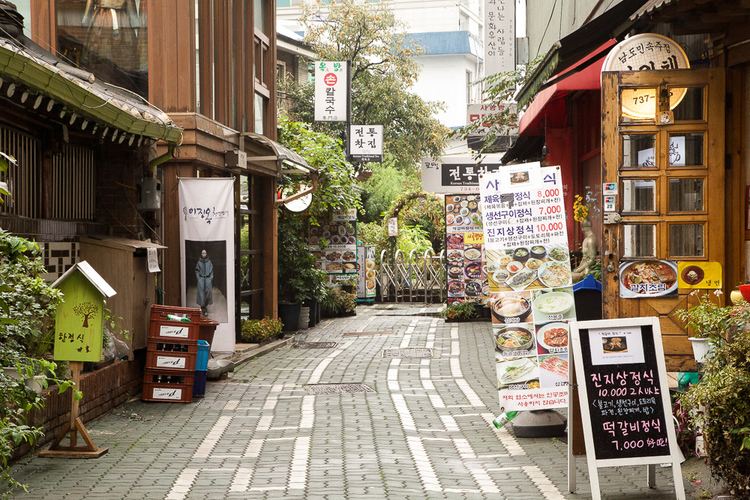 | ||
Insa-dong is a dong, or neighborhood of the Jongno-gu district of the South Korean city of Seoul. The main street is Insadong-gil, which is connected to a multitude of alleys that lead deeper into the district, with modern galleries and tea shops. At one time it was the largest market for antiques and artworks in Korea.
Contents
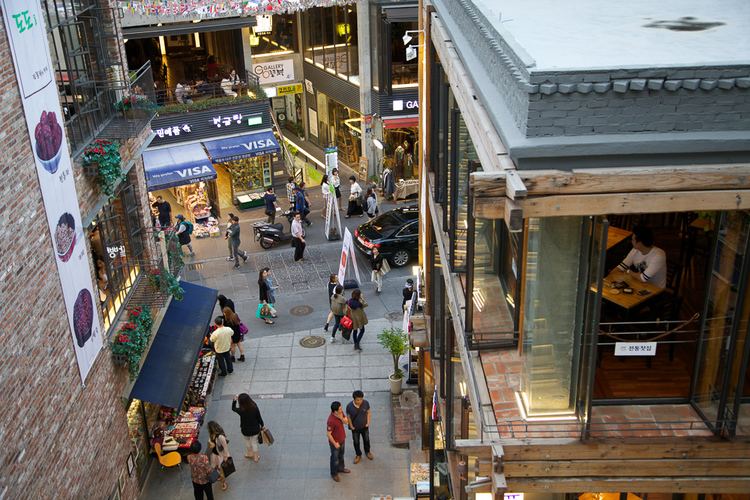
In area, 12.7 hectares (or 31.4 acres), the district is bordered by Gwanhun-dong to the north, Nagwon-dong to the east, and Jongno 2-ga and Jeokseon-dong to the south, and Gongpyeong-dong to the west.
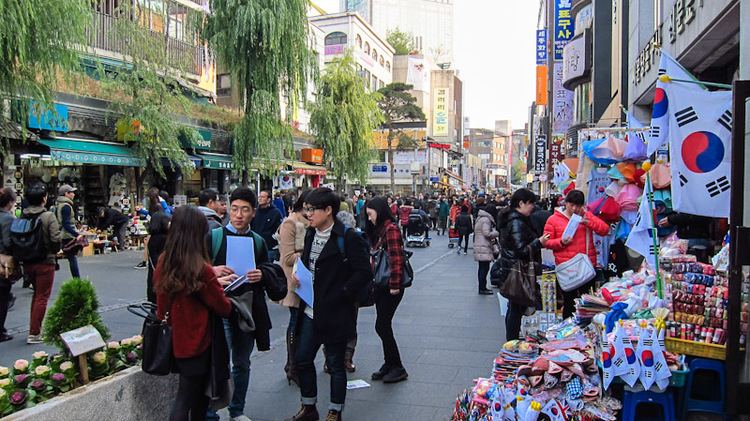
History
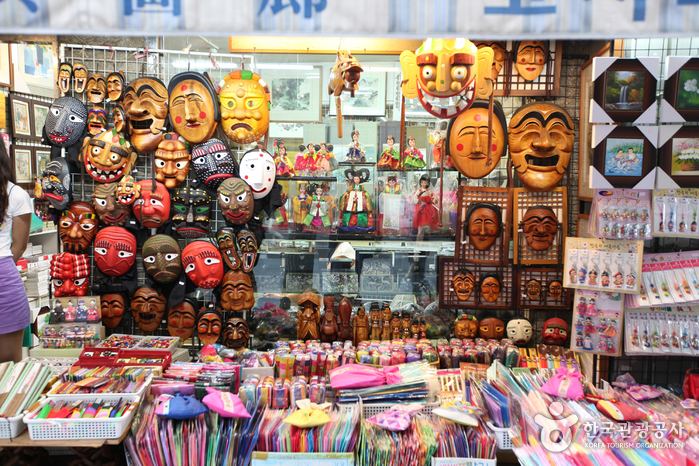
Insadong was originally two towns whose names ended in the syllables "In" and "Sa". They were divided by a stream which ran along Insadong's current main street. Insadong began 500 years ago as an area of residence for government officials. During the early period of the Joseon Dynasty (1392–1897), the place belonged to Gwanin-bang and Gyeonpyeong-bang - bang was the name of an administrative unit during the time - of Hanseong (old name for the capital, Seoul). During the Japanese occupation, the wealthy Korean residents were forced to move and sell their belongings, at which point the site became an area of trading in antiques. After the end of the Korean War, the area became a focus of South Korea's artistic and cafe life. It was a popular destination among foreign visitors to South Korea during the 1960s, who called the area "Mary's Alley". It gained in popularity with international tourists during the 1988 Seoul Olympics. In 2000 the area was renovated, and, after protest, the rapid modernization of the area was halted for two years beginning that year. In recent years the backstreets of Insadong have continued to be gentrified with cafes, garden restaurants, and traditional pension-style accommodations.
Sights

Insadong-gil is "well known as a traditional street to both locals and foreigners" and represents the "culture of the past and the present". It contains a mixture of historical and modern atmosphere and is a "unique area of Seoul that truly represents the cultural history of the nation." The majority of the traditional buildings originally belonged to merchants and bureaucrats. Some larger residences, built for retired government officials during the Joseon period, can also be seen. Most of these older buildings are now used as restaurants or shops. Among the historically significant buildings located in the area are Unhyeongung mansion, Jogyesa - one of the most significant Korean Buddhist temples, and one of Korea's oldest Presbyterian churches.
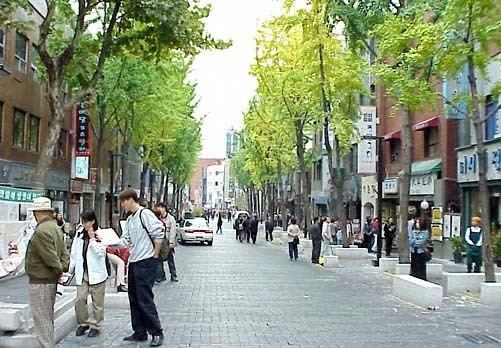
The area is well known for sightseeing, with approximately 100,000 visitors on Sundays reported in 2000. Insadong is also a visiting spot for foreign dignitaries such as Queen Elizabeth II and the princes of Spain and the Netherlands. It contains 40 percent of the nation's antique shops and art galleries as well as 90 percent of the traditional stationery shops. Particularly noteworthy is Tongmungwan, the oldest bookstore in Seoul, and Kyung-in Art Gallery, the oldest tea house. There are daily calligraphy demonstrations and pansori dancing performances.
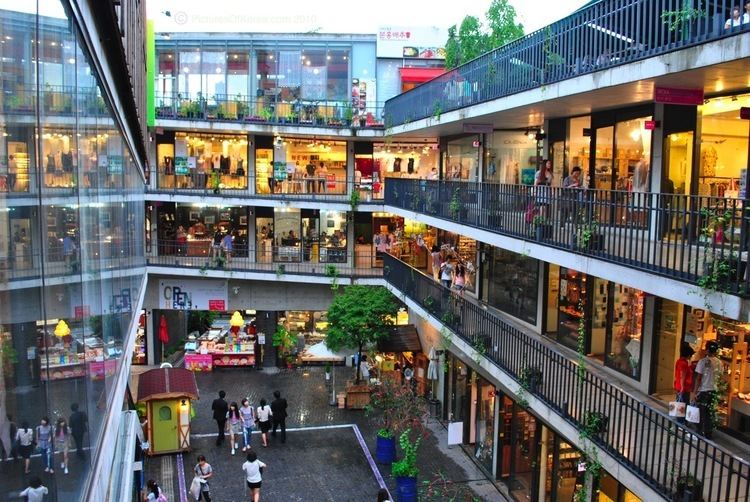
Ssamzigil, a shopping mall that concentrates in specialty stores of handcrafts, is also a prominent destination in Insadong. It opened in 2004.
Other attractions
Unhyeon Palace, Bosingak bell pavilion, and Jongno Tower can be found in this area. Samcheongdong is also a nearby dong with an art scene. One of Insadong's more recent attractions, the Asia Eros Museum, opened in 2004, and is purportedly South Korea's first museum devoted to sex. There is also an express bus to the resort island of Namiseom where the popular Korean Drama Winter Sonata was filmed.
The area is on the Seoul list of Asia's 10 greatest street food cities for the gimbap, odeng, bungeoppang.
Information Centers
There are three information centers which offer information or information materials about Insa-dong and Seoul in Insa-dong. They are the Insadong P.R Center, North Information Center (N-info center), and South Information Center (S-info center). N-info Center and S-info Center are located at the north and south entrances of Insa main street. Insa P.R Center is located on the opposite side of SSamzigil, a well-known shopping center in Insadong. At the Insa P.R Center, visitors can have a hanbok (Korean traditional dress) experience.
Transport
In January 2013, the Seoul Metropolitan Rapid Transit Corporation published free guidebooks in three languages: English, Japanese and Chinese (simplified and traditional), which features eight tours as well as recommendations for accommodations, restaurants and shopping centers. These were distributed from information centers in 44 subway stations, namely Itaewon Station on Line 6 and Gwanghwamun Station on Line 5. The tours are designed with different themes, e.g. Korean traditional culture. Which goes from Jongno 3-ga Station to Anguk Station and Gyeongbokgung Station on Line 3 that showcases antique shops and art galleries of this area.
